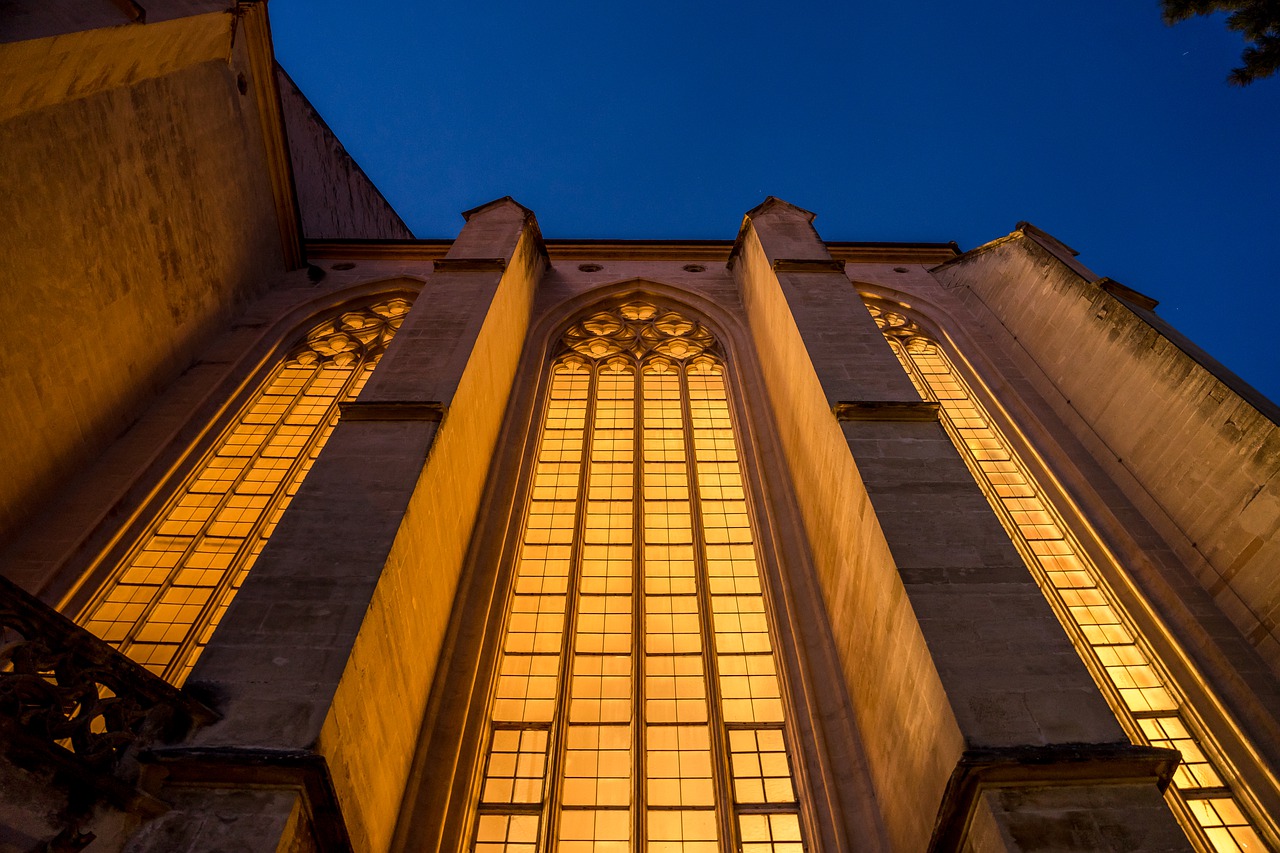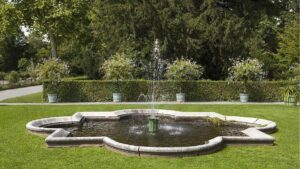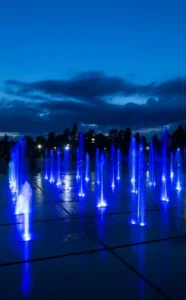- Product Knowledge
Choosing the Ideal Architectural Lighting Fixture for Your Business Space
The lighting in your business space is more than just a practical necessity. It plays a crucial role in shaping the ambiance, enhancing the aesthetic appeal, and boosting the productivity of your employees. Choosing the ideal architectural lighting fixture for your business space can transform your environment, making it more inviting and efficient. This comprehensive guide will help you understand the importance of lighting, the types of fixtures available, and how to make the best choice for your business needs.
Importance of Lighting in Business Spaces
The importance of lighting in business spaces cannot be overstated. Proper lighting can enhance the overall look and feel of your space, making it more appealing to both employees and clients. It can also improve functionality, ensuring that areas are well-lit for work tasks, meetings, and other activities.

How Lighting Impacts Ambiance and Productivity
Lighting significantly impacts the ambiance of a space. Bright, well-lit areas can create a sense of openness and energy, while dimmer, softer lighting can make a space feel cozy and intimate. For businesses, the right lighting can influence employee productivity and customer experience. Well-lit workspaces help reduce eye strain and fatigue, leading to better performance and job satisfaction. In customer-facing areas, attractive lighting can create a welcoming atmosphere that enhances the client experience.
Understanding Architectural Lighting Fixtures
To choose the right lighting for your business, it’s essential to understand what architectural lighting fixtures are and how they can be used.
Definition of Architectural Lighting
Architectural lighting refers to the integration of light sources into a building’s structure. This type of lighting not only serves a functional purpose but also enhances the architectural features of the space. It includes both interior and exterior lighting solutions designed to highlight the design elements and improve overall visibility.
Types of Architectural Lighting Fixtures
There are various types of architectural lighting fixtures, each serving different purposes and creating different effects. These include:
- Recessed Lighting: Installed into the ceiling, providing a clean, streamlined look.
- Pendant Lighting: Hanging fixtures that offer direct lighting and serve as decorative elements.
- Track Lighting: Flexible lighting option where lights are mounted on a track system.
- Wall Sconces: Fixtures mounted on walls, adding both functional and accent lighting.
- Linear Lighting: Long fixtures that provide even, continuous illumination.
Key Features of High-Quality Fixtures
High-quality architectural lighting fixtures should have several key features. They should provide sufficient illumination, be energy-efficient, and complement the design aesthetic of your space. Additionally, durability and ease of maintenance are important factors to consider.
Benefits of Proper Architectural Lighting in Business Spaces
Implementing proper architectural lighting in your business space offers numerous benefits.
Enhancing Aesthetic Appeal
Well-chosen lighting fixtures can enhance the aesthetic appeal of your business space. By highlighting architectural features and creating visually appealing effects, lighting can transform a mundane space into a visually stunning environment.
Improving Employee Productivity
Good lighting is essential for improving employee productivity. Proper illumination reduces eye strain and fatigue, making it easier for employees to focus on their tasks. It also creates a more pleasant and comfortable work environment, which can boost morale and efficiency.
Creating a Welcoming Atmosphere for Clients
The right lighting can create a welcoming atmosphere for clients. It sets the tone for your business, making a positive first impression. Whether it’s a cozy ambiance in a restaurant or a professional environment in an office, lighting plays a key role in shaping the client experience.
Key Considerations When Choosing Lighting Fixtures
When selecting architectural lighting fixtures for your business space, several key considerations can guide your decision.
Assessing Your Space
Start by assessing your space. Consider the size, layout, and function of each area. Different spaces will have different lighting needs. For instance, workspaces may require brighter, more focused lighting, while reception areas might benefit from softer, more ambient lighting.
Determining Lighting Needs
Determine your specific lighting needs based on the activities that will take place in each area. Think about the tasks your employees will perform, the ambiance you want to create, and any architectural features you want to highlight. This will help you choose fixtures that provide the right amount and type of light.
Balancing Aesthetics and Functionality
It’s important to balance aesthetics and functionality when choosing lighting fixtures. While the design and appearance of the fixtures are important, they should also provide adequate illumination and meet the practical needs of your space.
Types of Architectural Lighting Fixtures
Understanding the different types of architectural lighting fixtures can help you make an informed decision.
Recessed Lighting
Recessed lighting, also known as downlighting, is installed into the ceiling, providing a clean, unobtrusive look. It is ideal for general illumination and can be used in various settings, including offices, conference rooms, and retail spaces.
Pendant Lighting
Pendant lighting fixtures hang from the ceiling and are available in a wide range of styles and sizes. They provide direct lighting and can also serve as decorative elements. Pendants are perfect for areas where focused light is needed, such as over reception desks or conference tables.
Track Lighting
Track lighting consists of multiple light heads mounted on a track system. It is a flexible option that allows you to direct light where it’s needed most. Track lighting is suitable for highlighting specific areas or objects, making it a popular choice for galleries, retail stores, and open office layouts.
Wall Sconces
Wall sconces are mounted on walls and can provide both functional and accent lighting. They are great for adding visual interest and highlighting architectural features. Wall sconces work well in hallways, lobbies, and reception areas.
Linear Lighting
Linear lighting fixtures provide continuous, even illumination and are often used in commercial and industrial settings. They are ideal for large areas that require uniform lighting, such as offices, warehouses, and conference rooms.
Energy Efficiency and Sustainability
Choosing energy-efficient and sustainable lighting options can benefit both your business and the environment.
Benefits of Energy-Efficient Lighting
Energy-efficient lighting fixtures consume less electricity, which can lead to significant cost savings on your energy bills. They also produce less heat, reducing the need for air conditioning and further lowering energy consumption. Additionally, energy-efficient lights have a longer lifespan, reducing the frequency of replacements and maintenance.
Types of Energy-Efficient Fixtures
Several types of energy-efficient lighting fixtures are available, including:
- LED Lights: Highly energy-efficient, long-lasting, and available in various styles and colors.
- CFLs (Compact Fluorescent Lamps): Use less energy than traditional incandescent bulbs and have a longer lifespan.
- Smart Lighting Systems: Allow for greater control over energy usage with features like dimming, scheduling, and occupancy sensors.
Incorporating Sustainable Lighting Practices
Incorporating sustainable lighting practices can further enhance the environmental benefits of your lighting choices. This includes using fixtures made from sustainable materials, recycling old lighting fixtures, and taking advantage of natural light whenever possible.
Innovative Lighting Solutions for Modern Business Spaces
Modern business spaces can benefit from innovative lighting solutions that offer greater control, flexibility, and efficiency.
Smart Lighting Systems
Smart lighting systems allow you to control your lighting remotely using a smartphone or computer. These systems offer features like dimming, color changing, scheduling, and occupancy sensors, providing greater flexibility and efficiency.
Adjustable and Dimmable Fixtures
Adjustable and dimmable fixtures allow you to customize the lighting levels to suit different activities and times of day. This can enhance both the functionality and ambiance of your space.
Integrating Lighting with Technology
Integrating lighting with other technologies, such as smart building systems and IoT (Internet of Things) devices, can further enhance the efficiency and functionality of your lighting. This can include automated lighting controls, energy monitoring, and integration with HVAC systems.
Common Mistakes to Avoid When Choosing Lighting Fixtures
Avoiding common mistakes can help you achieve the best results with your lighting design.
Overlooking the Importance of Lighting Design
One common mistake is overlooking the importance of a well-thought-out lighting design. A good lighting design considers the needs of the space, the activities that will take place, and the desired ambiance. Investing time in planning your lighting design can result in a more functional and visually appealing space.
Ignoring Maintenance Requirements
Ignoring maintenance requirements can lead to reduced performance and shorter lifespan of your lighting fixtures. Regular cleaning and maintenance are essential for keeping your lights in good condition and ensuring they continue to provide adequate illumination.
Failing to Consider Future Needs
When choosing lighting fixtures, it’s important to consider your future needs. This includes thinking about how your space might change or grow over time and choosing fixtures that can adapt to these changes. This can save you time and money in the long run by reducing the need for frequent replacements or upgrades.
Case Studies and Success Stories
Exploring real-world examples of successful lighting projects can provide inspiration and insight into the benefits of proper architectural lighting.
Successful Lighting Projects in Offices
Many businesses have successfully used architectural lighting to enhance their office spaces. For example, companies have implemented smart lighting systems to improve energy efficiency and employee productivity. Others have used a combination of recessed lighting and pendant fixtures to create a balanced and visually appealing workspace.
Retail Spaces
In retail spaces, strategic lighting can highlight merchandise and create an inviting atmosphere for customers. Retailers have used track lighting to focus attention on key products and pendant lighting to enhance the overall aesthetic appeal of their stores.
Hospitality and Restaurants
In the hospitality and restaurant industries, lighting plays a crucial role in creating a welcoming and enjoyable experience for guests. Hotels and restaurants have used a mix of wall sconces, pendant lights, and recessed lighting to create a warm and inviting ambiance that enhances the guest experience.
Healthcare Facilities
Healthcare facilities have also benefited from proper architectural lighting. Well-lit spaces can improve patient comfort and staff efficiency. For example, hospitals have used linear lighting to provide even illumination in patient rooms and track lighting to highlight important areas in examination rooms.
Choosing the ideal architectural lighting fixture for your business space involves understanding the different types of fixtures, assessing your specific needs, and considering both aesthetic and functional requirements. By making informed decisions and investing in high-quality, energy-efficient lighting solutions, you can enhance the overall ambiance, improve productivity, and create a welcoming environment for clients and employees alike.
Frequently Asked Questions
The most popular types of architectural lighting fixtures include recessed lighting, pendant lighting, track lighting, wall sconces, and linear lighting.
Proper lighting reduces eye strain and fatigue, making it easier for employees to focus on their tasks and improving overall productivity.
Smart lighting systems offer greater control and efficiency, allowing you to adjust lighting levels, schedule lighting changes, and monitor energy usage remotely.
Lighting fixtures should be regularly maintained to ensure optimal performance. This includes cleaning the fixtures, checking for any damage, and replacing bulbs as needed.
Yes, there are cost-effective options for high-quality lighting fixtures. Energy-efficient options like LED lights can provide excellent illumination while reducing energy costs over time.



